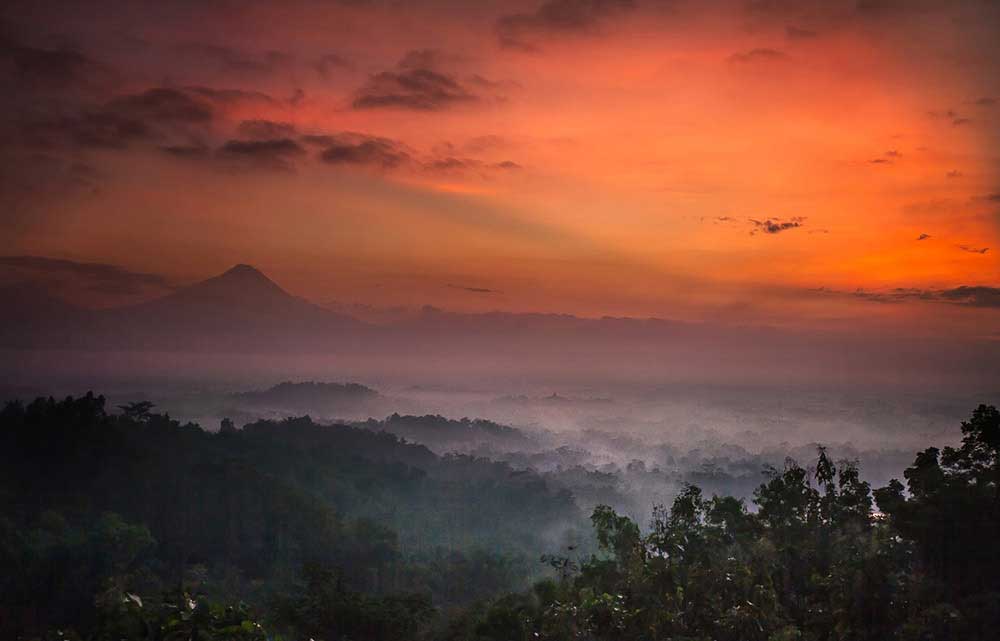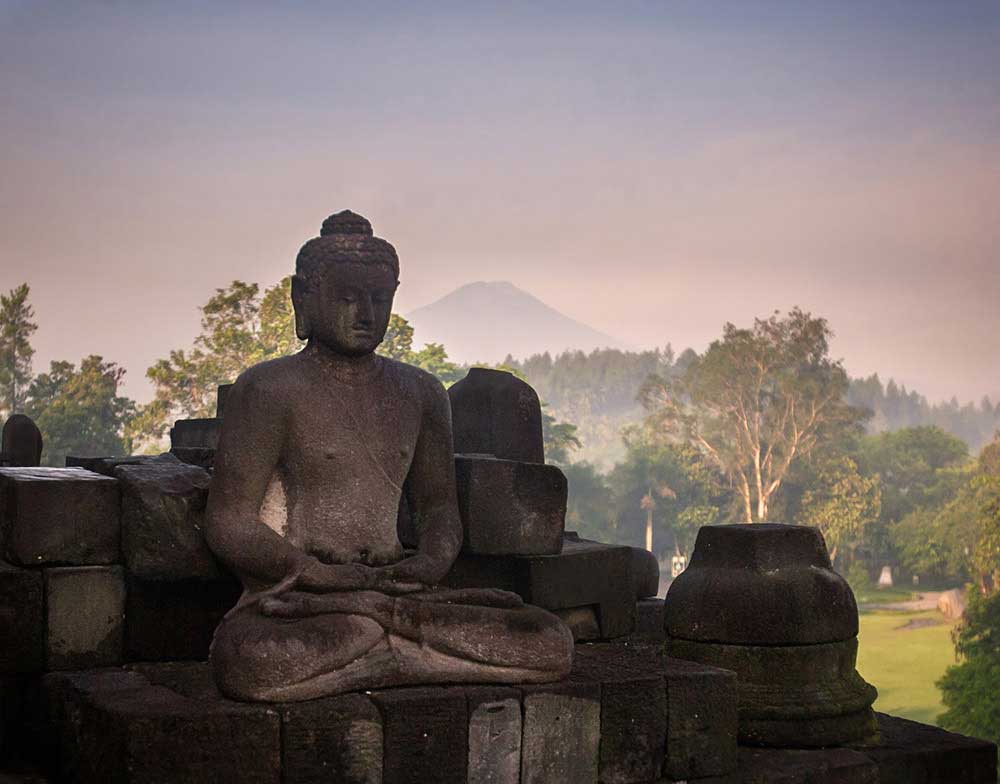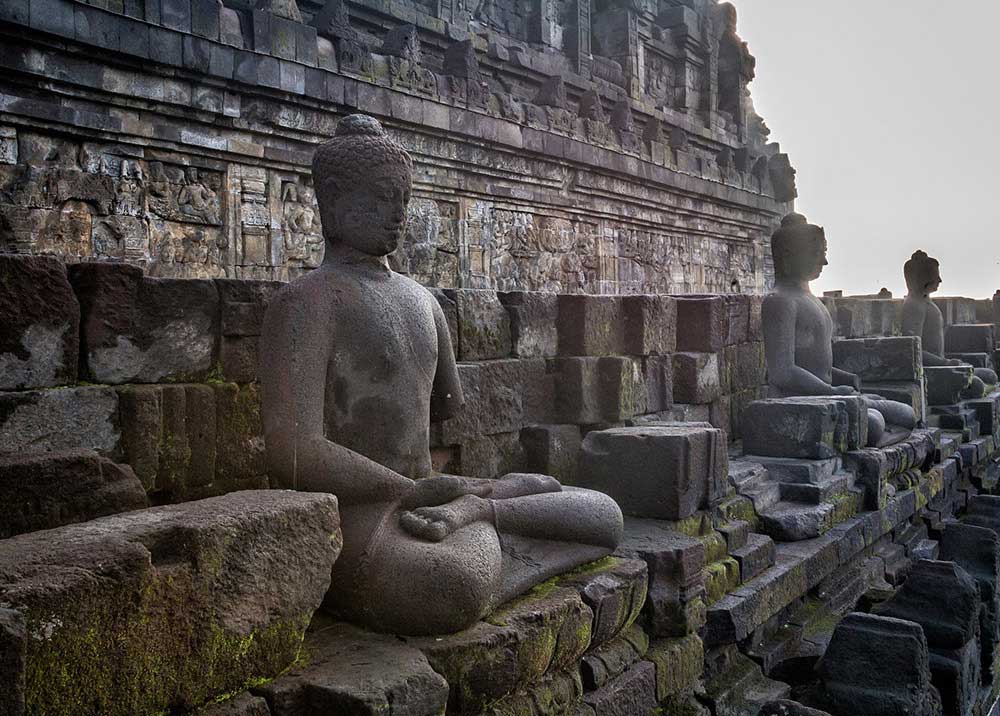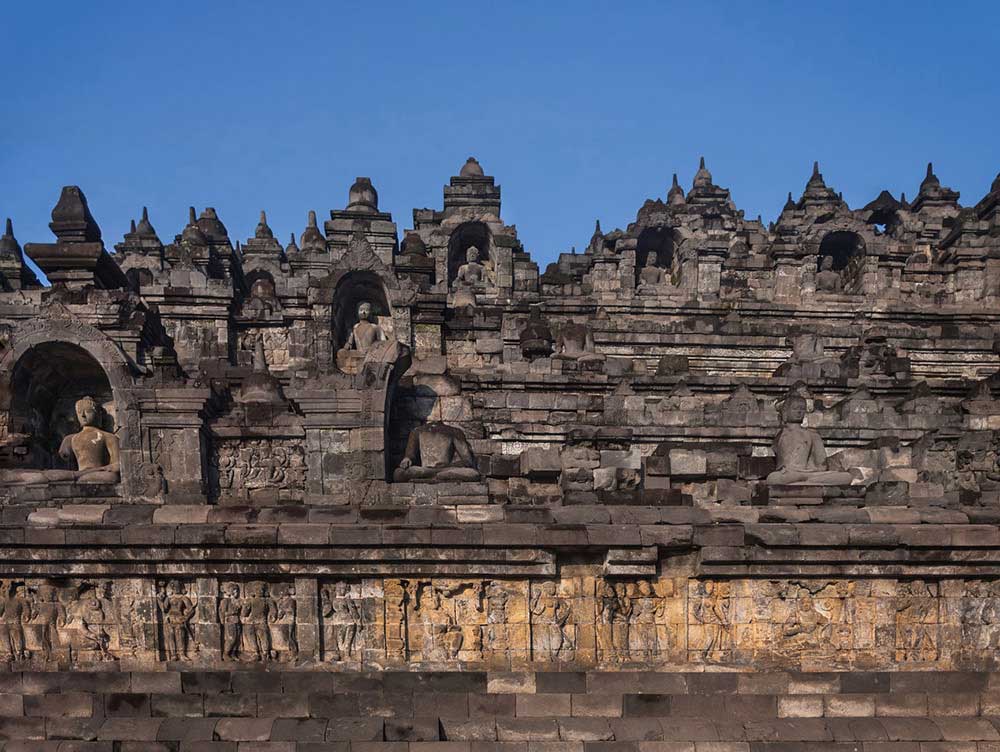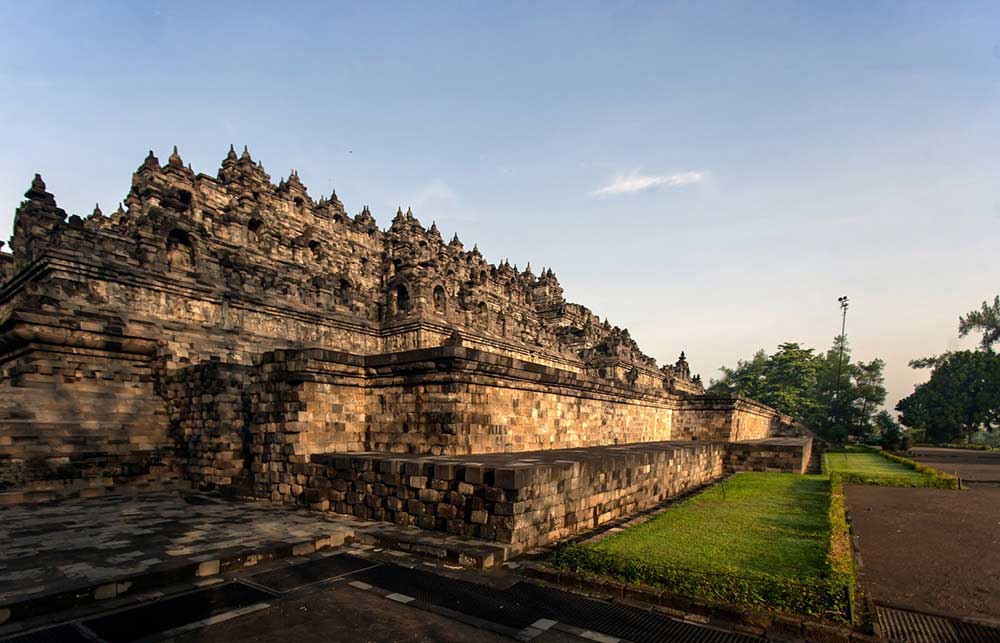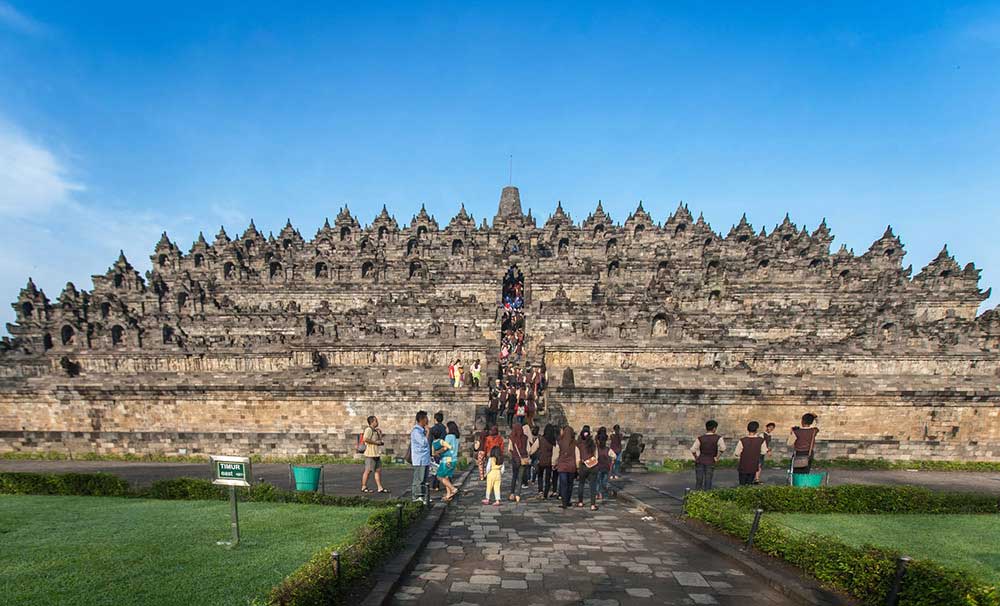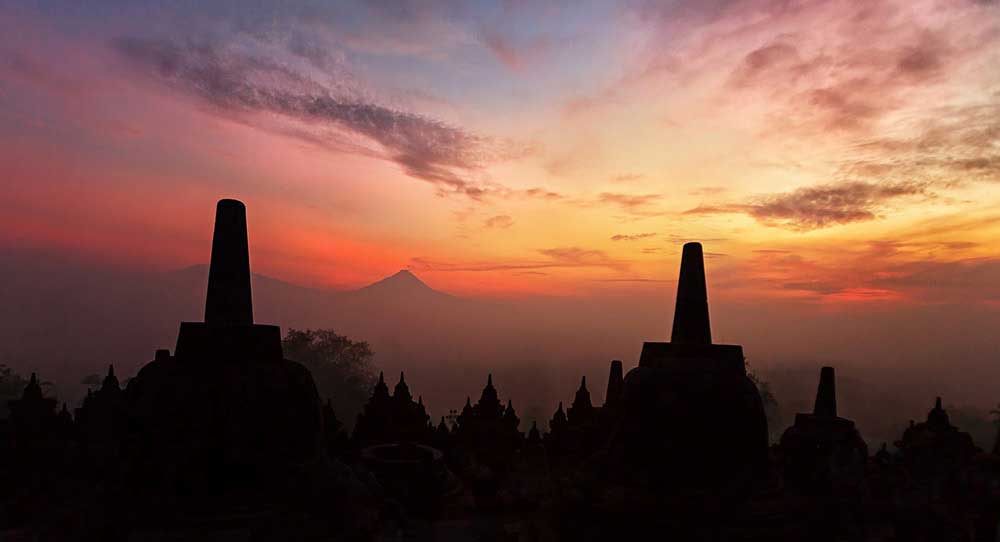Hear Those Who Call
Allahu Akbar ……. Allahu Akbar.
Assalatu khayrum minan naum
O Allah, hear those who call:
the refugees, the small,
and those who cannot speak.
Hear them and help with blessings from above;
and for me…….give me love1.
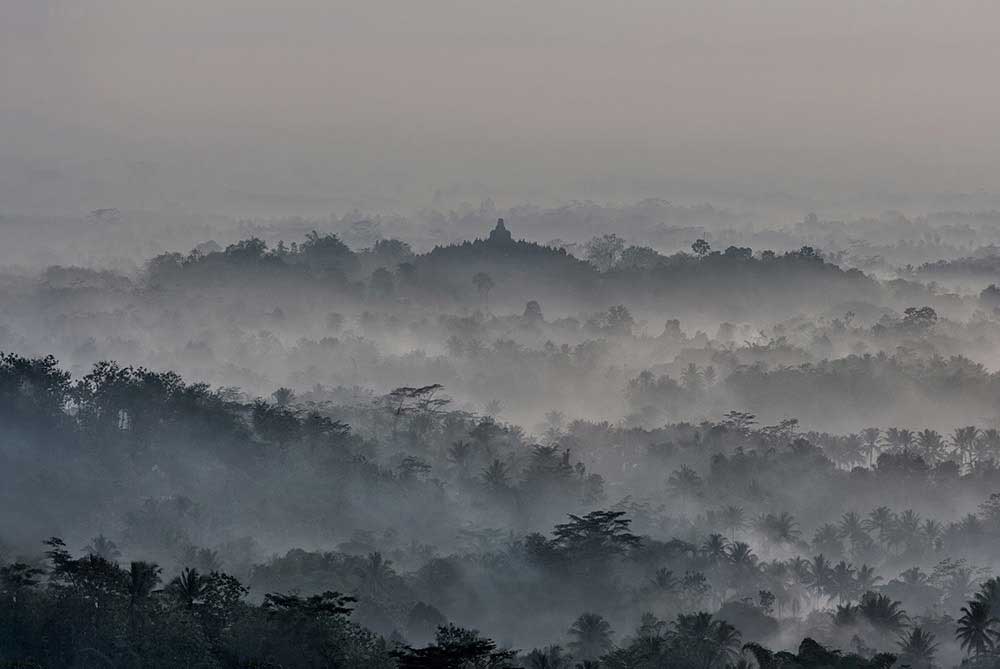
As the first rays of light break through the thick mist covering the ground, slowly and gracefully, Borobudur temple comes into the view.
I close my eyes, deeply breathing in scent of jungle and lyrical call of Adhan, calling faithful to a Morning Prayer. Borobudur is slowly casting a spell on me with syncretistic blend of Hinduism, Buddhism, and Sufi-influenced mystical Islam, further amplifying feelings of reverence. Slowly, pilgrims with their heads down low, deep in prayers are beginning their solemn procession around each level to the top. There is no incense burning at Borobudur, just peace, serenity, and mystical magnificence of the ancient temple.
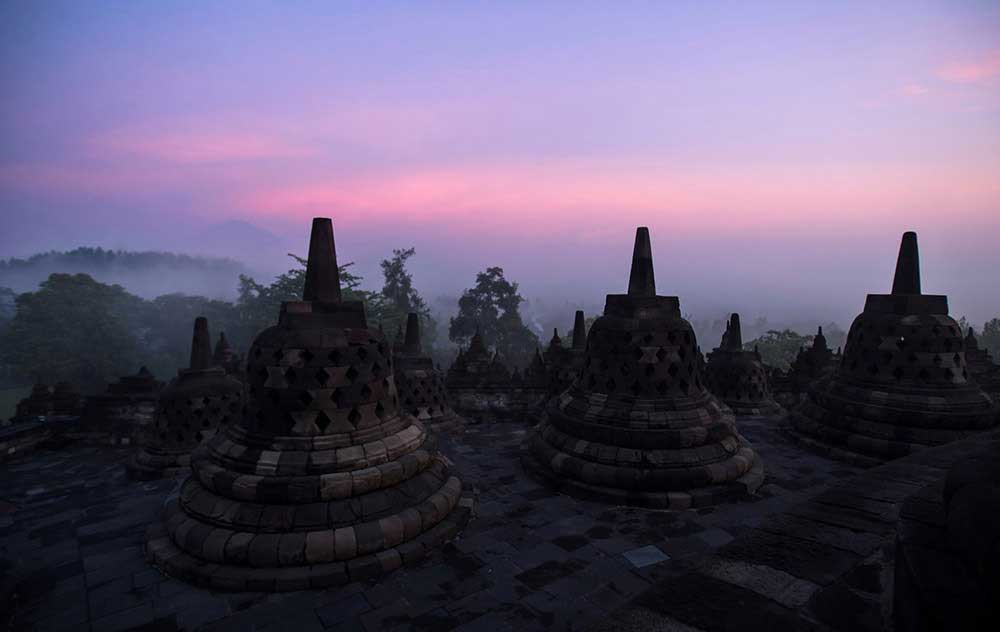
Architect of Time
Kings of the Sailendra Dynasty built Borobudur around 750 AD, about 400 years before Cambodia’s Angkor Wat or European Cathedrals, possibly to enhance the image of Buddhism as Hinduism was growing in strength across the Indonesian archipelago. Borobudur is one of the world’s most complex buildings, its creation shrouded in secret without any written records or what purpose it served, bound forever to remain a mystery. From the distance temple resembles a big lotus flower bud ready to bloom, effortlessly floating on a lake, a single stupa build from volcanic rock, in the form of a giant tantric Buddhist mandala when viewed from above, simultaneously representing the Buddhist cosmology and the nature of human mind.
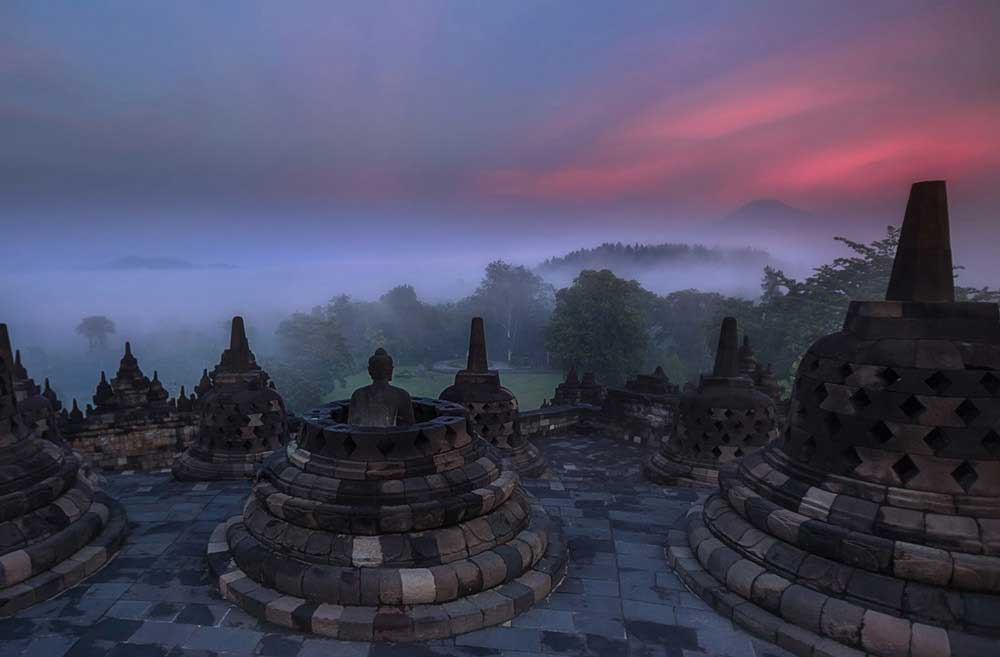
Around 16th century A.D., Borobudur was left slowly to decay on its own, as volcanic eruptions deposited ash in the fertile soil, supporting rapid growth of lush vegetation, engulfing temple in possessive embrace. First, humanity conquered nature to create, process swiftly reversed by nature, conquering humanity to destroy its mighty creation, cloaking crumbling towers in jungle canopies and locking it’s walls in tight cradle of its roots. Poetic cycle, synonymous with Hindu mysticism of never-ending creation (Brahma), destruction (Shiva), and preservation (Vishnu) Borobudur is based on Mount Meru (Hindu mythology), and the mandala, a mystic Buddhist symbol of the universe, combines the square as earth and the circle as heaven.
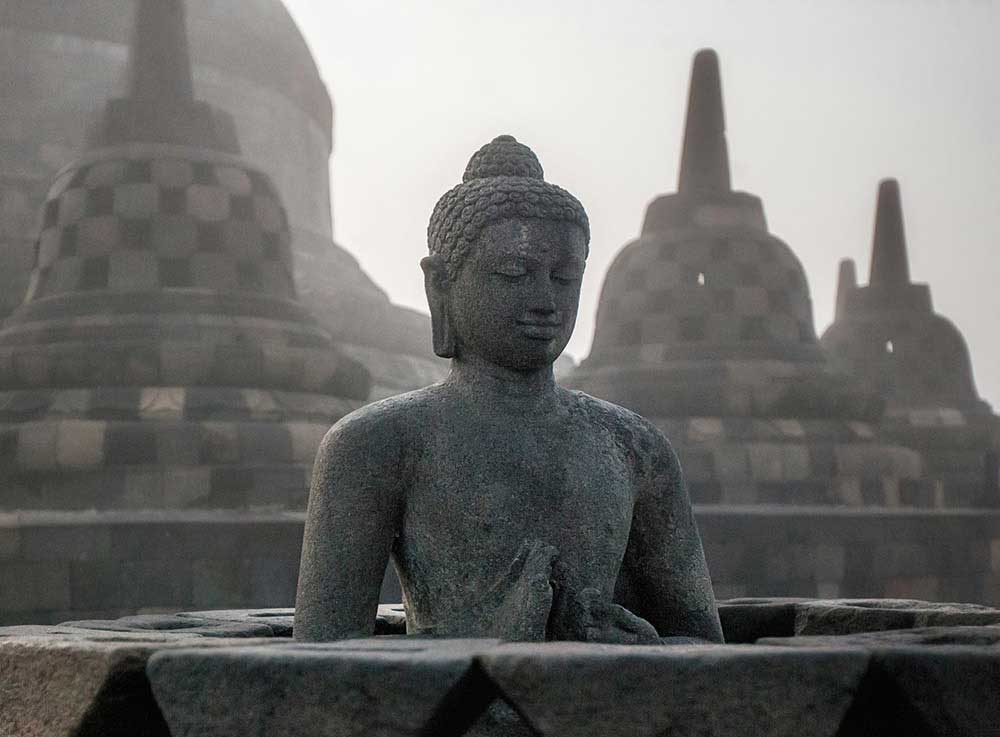
Temple was re-discovered in the 19th century by Sir Thomas Stamford Raffles, the British governor of Java. Who, after hearing tales about mystical sanctuary, hidden deep within the island, organized excavation to uncover the temple, bringing Borobudur back into the light and damaging it in the process, as the temple began to deteriorate when exposed to the elements. Furthermore, stones were removed and used as building materials and Buddha heads sold to art collections around the world.
Lotus and the Universe
Resembling lotus flower floating on the lake, or a cosmic mountain enclosed by the sky, Borobudur represents cosmos metaphysically, and symbolically. A world that can only be reached through isolated alleys as stages, a journey taken through life and narrow passages of a temple. Borobudur is an open stupa and a “closed world” at the same time, perceived intensly inside the temple, where view is limited to high walls full on relieves, or the verandah squared in a way that one can’t see other parts of the temple, even in a same floor.
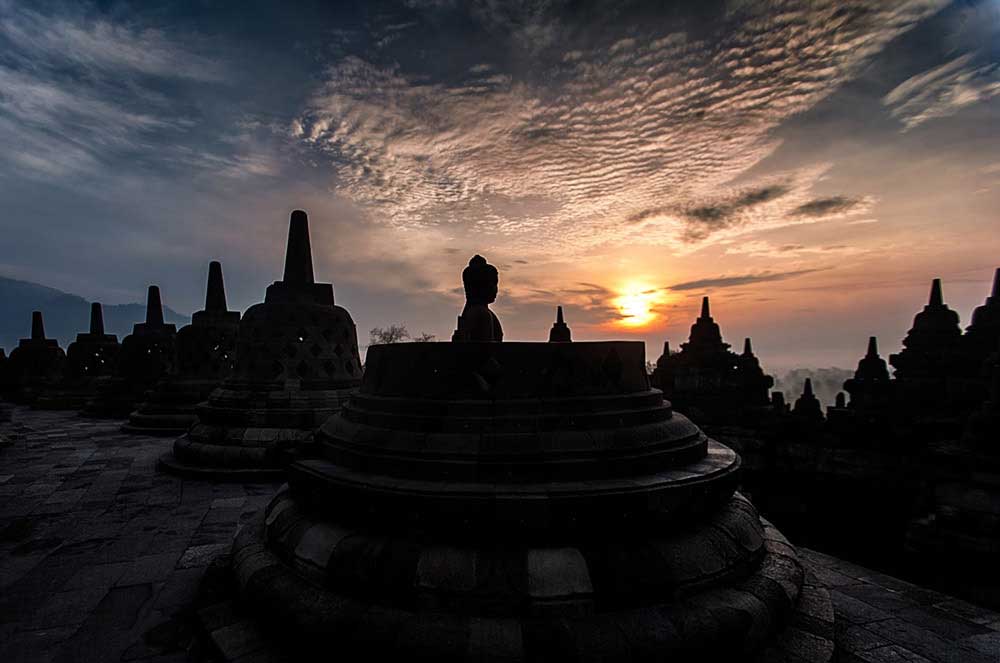
Its structure resembles that of a pyramid, yet it has been also referred to as a caitya (shrine), a stupa (reliquary), and a sacred mountain. Structure consists of a series of open-air passageways that radiate around cosmic axis, and ten mounting terraces corresponding to successive stages and forms Siddhartha assumed, before achieving Buddha-hood. The monument consists of over 500 Buddha statues, nine stacked platforms (the number nine is mystic in Buddhism), six square, and three circular, crowned by a central dome.
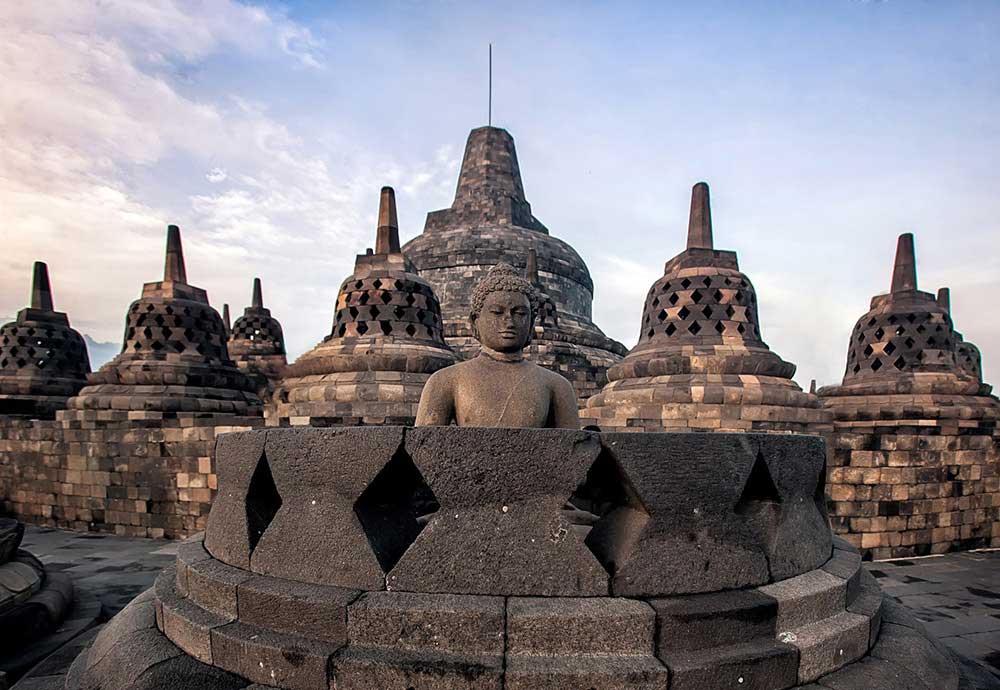
Illuminated Path
The idea of path is very important concept in Buddhism, and essential in understanding meaning and purpose of Borobudur in depth, as it monumentalizes the impermanence of human existence. The physical movements along the path while meditating on the spiritual message of the sutras facilitates full embrace the Buddha’s message of impermanence. Borobudur represents the ten levels of a Bodhisattva’s life which one must develop to become a Buddha or an awakened one. Devotees start at the base, traversing clockwise along walkways, which gradually ascend to its uppermost level, physical movement symbolizing the non-physical—or spiritual—path of enlightenment. Moving past the base and through the four galleries, the devotee emerges onto the three upper terraces, encountering 72 stupas, each containing a three-dimensional sculpture of a Buddha enclosed within a stone latticework. The Buddha statues look out into a distance, over the palm groves, limestone hills and volcanic mountains, enjoying eternal serenity.
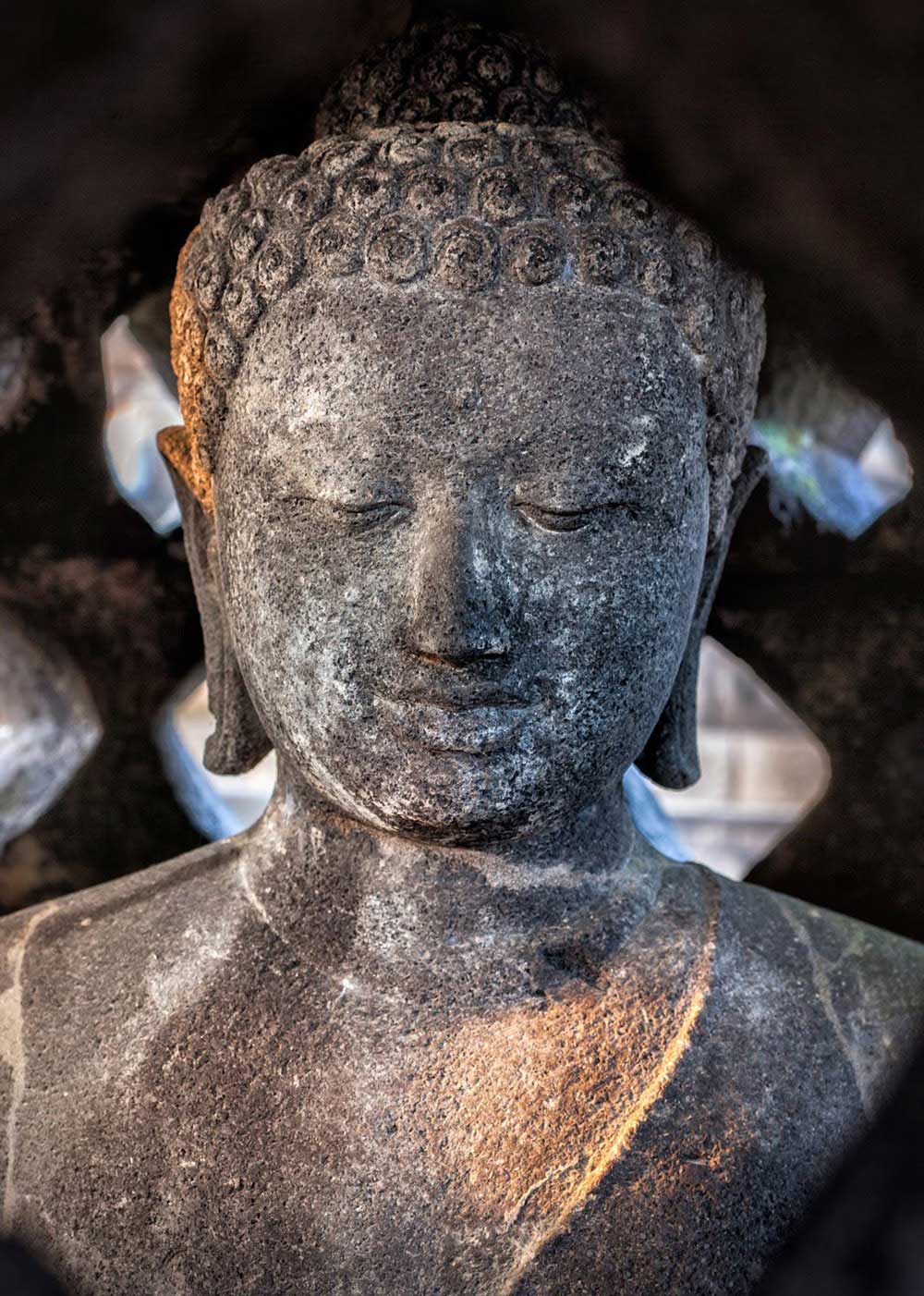
Sacred Journey
For over 1,200 years, pilgrims ago have traveled to Borobudur to worship and marvel at the thousands of sculptured figures carved into the lower tiers of Borobudur. In their solemn narrative carvings, convey the insights of faith in a sequential storytelling framework. Meticulously carved relief sculptures facilitate meditation on a physical and spiritual journey, which guides pilgrims progressively toward higher states of consciousness.
Borobudur symbolizes the micro-cosmos, which is divided into three levels, in which man’s world of desire is influenced by negative impulses; the middle level, the world in which man has control of his negative impulses and uses his positive impulses; the highest level, in which the world of man is no longer bounded by physical and worldly desires. The temple’s pathway takes one on a journey from the earthly realm of desire, represented and documented on the hidden narratives of the structure’s earthbound base (darkness), through the galleries, until one finally emerges into the realm of formlessness as symbolized and manifested in the open circular terraces, spiritual enlightenment generated by the metaphysical journey of the sacred path. Temple’s apex is crowned with large Great Stupa, a symbol of the enlightened mind.
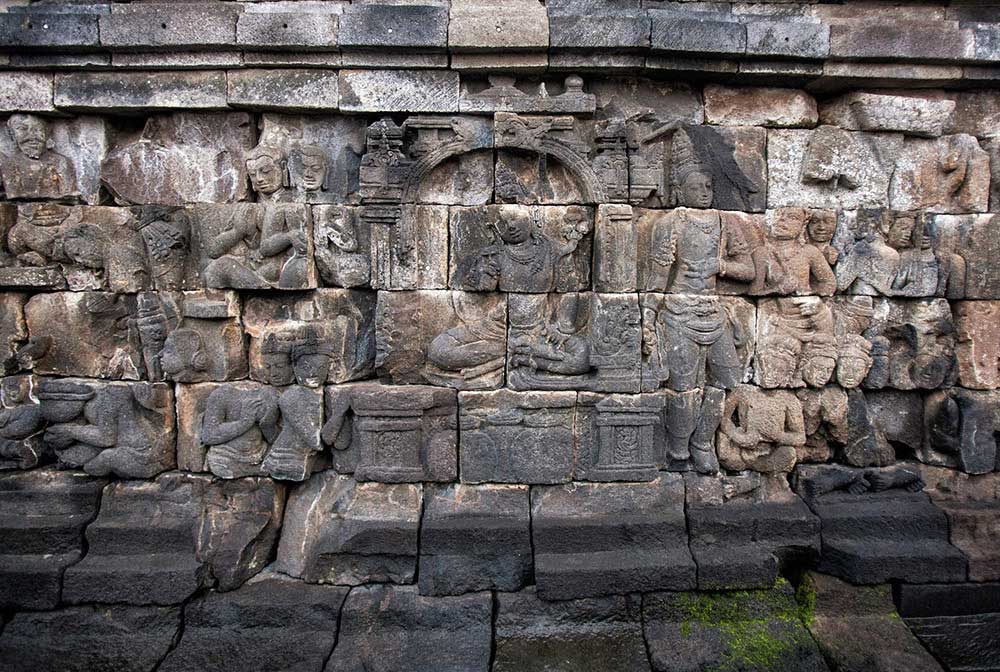
Day of Enlightenment
During Buddha Day, barefoot male monks dressed in saffron robes move in a very slow, solemn manner, chanting prayers, followed by women dressed in white saris, everyone walking in a single-file procession and carrying lighted candles. Converging on the monument, several hundred monks, will circle the temple clockwise toward the Great Stupa, where they wait for the moon to appear on the horizon, the time indicating the birth of Buddha.
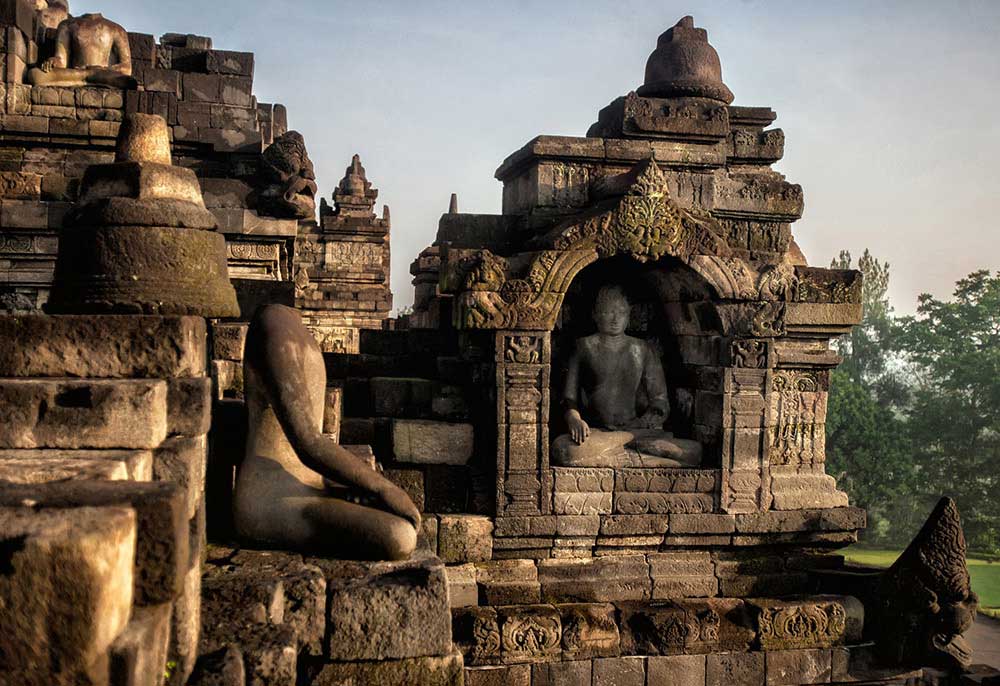
Occasionally, a rising sun will strike the temple’s peak in radiant synergy, further blurring the boundaries between metaphysical and physical, the symbolic and the material, the cosmological and the earthly within the structure and the framework of spiritual paradox. Among the banyan tree roots, lays the hidden Buddha, whose face is forever bound to remain the mystery of Borobudur in its silent tranquility, as an earthly re-creation of the Universe in stone. [Official Website]
1Wael Abdelgawad



